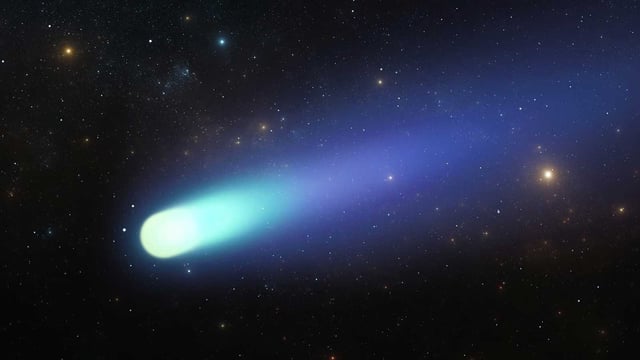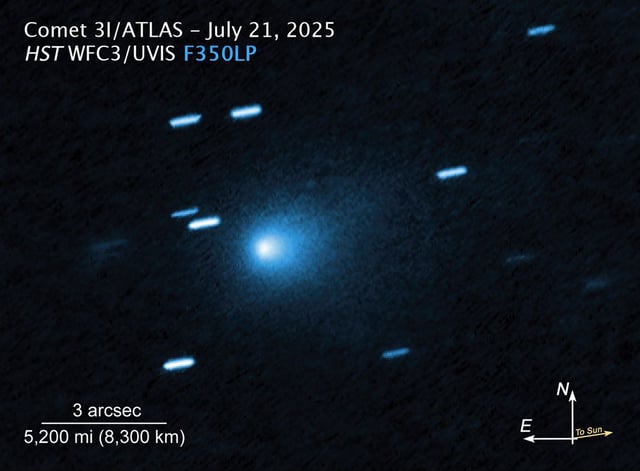Overview
- Hubble Space Telescope observations confirm 3I/ATLAS is traveling on a hyperbolic trajectory at about 209,000 km/h, making it the fastest interstellar visitor recorded and revealing a sunward dust plume and faint tail.
- New imagery narrows the comet’s nucleus diameter to between roughly 320 meters and 5.6 kilometers, refining earlier estimates and improving models of its structure.
- Simultaneous visible spectrophotometry from Seimei Observatory constrains the comet’s surface colors to red indices similar to D-type asteroids, supporting its active cometary nature.
- NASA and partner facilities including JWST, TESS, Swift, Rubin and ground telescopes are mounting a coordinated campaign to observe the comet before its late-October perihelion inside Mars’s orbit and have affirmed it poses no threat to Earth.
- Most specialists contest Avi Loeb’s artificial-origin hypothesis and spacecraft retargeting proposals remain under review pending approval.


